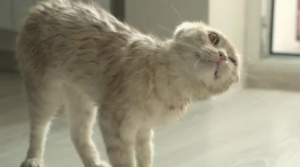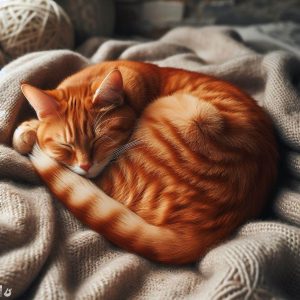Seeing your beloved cat emerge from the tub shivering uncontrollably can be alarming for any pet parent. You may worry they’re having a seizure or the bath made them dangerously ill.
Take a deep breath and relax – those post-bath shakes are perfectly normal if annoying, feline behavior. In fact, shivering and shuddering is most cats’ instinctive reaction to the stress and discomfort of bathing.
While concerning, the tremors are not dangerous provided they resolve within an hour or two. And with a few simple adjustments to your bathing routine, you can significantly reduce the shivering and help your cat stay calmer.
This guide covers everything you need to know about post-bath shivers, including:
- The science behind why cats shake after baths
- Tips to minimize shivering during and after washing
- Soothing care for a wet, trembling kitty
- Signs of real distress needing a vet visit
- Professional grooming services as an alternative
- FAQs on bath-time shivering
So keep reading for in-depth information on your cat’s annoying yet harmless shaking, and how to make bath time as low-stress as possible.
Why Do Cats Shake and Shiver After Bathing?
Cats shiver and shudder vigorously after a bath for a few key scientific reasons:
1. Acute Stress and Fear Response
Most cats have an innate dislike or even phobia of water. Bathing goes entirely against their nature as fastidious groomers.
The feeling of heavy, wet fur clinging to their skin causes profound stress and triggers their fight-or-flight response. The post-bath shaking is an involuntary release of that pent-up anxiety and discomfort.
It’s your cat’s way of literally “shaking off” the unpleasant bathing experience as soon as they exit the dreaded water.
2. Powerful Instinct to Remove Water from Fur
Cats’ coats are highly specialized to repel water for survival in the wild. When fully soaked, the fur loses its insulating properties. So having drenched fur goes against every feline instinct.
The intense shuddering helps rapidly shed water trapped in their coat and restore its natural water-resistant qualities. It’s an instinctive reaction to eliminate the abnormal sensation of sodden fur sticking to their body.
3. Rapid Temperature Regulation
Wet fur leeches away cats’ body heat through evaporative cooling. Even warm bath water sucks heat away once applied to their skin.
The vigorous post-bath trembling helps cats quickly raise their lowered core temperature back up to normal levels through muscle activity.
Without those heat-generating tremors, the chilled sensation of wet fur could lead to dangerous hypothermia. So shivering is a protective mechanism against cold stress.
4. Involuntary Shock Reaction
Some cats may begin shivering due to the sheer unexpected shock of being suddenly immersed in water or sprayed with a shower nozzle. The abrupt contact can cause an automatic spasm through their body.
5. Discomfort from Wet Paw Fur
Cats often intensely lick and chew at their paws after a bath. The damp fur between the toes is highly uncomfortable for fastidious felines.
The paw shaking and licking immediately after bathing helps remove that excess moisture from their extremities and return sensation to their feet.
Now that you know the science behind post-bath shivering, let’s go over some tips to reduce this reaction and make bath time more comfortable.
12 Tips to Minimize Shaking and Stress During Bathing
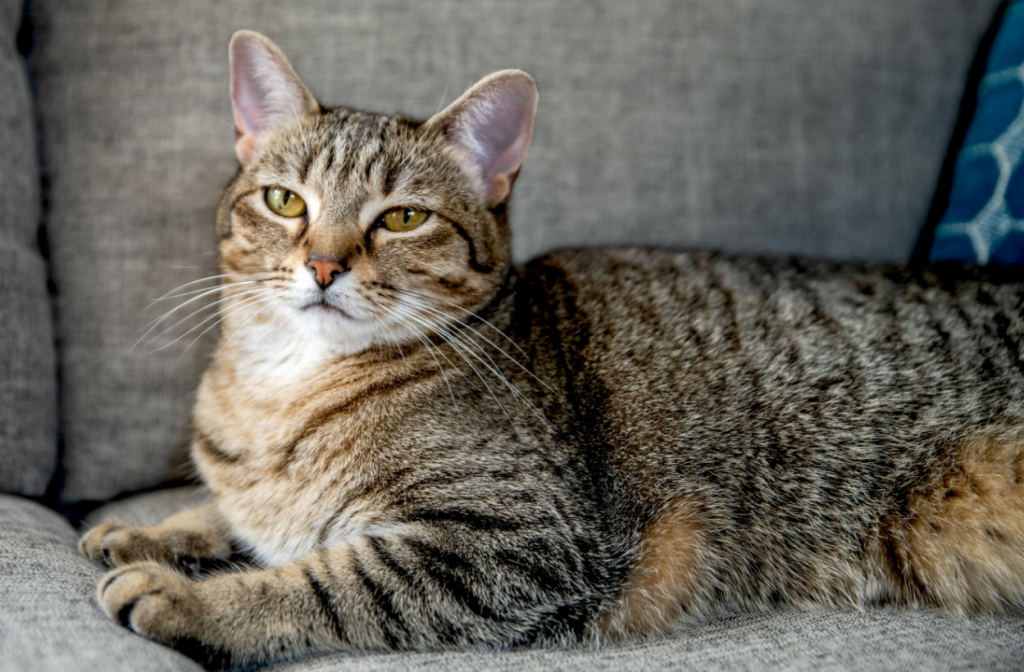
While you can’t entirely prevent shivering after a bath, you can make the overall experience much gentler on your cat:
1. Stay Calm Yourself
As prey animals, cats are wired to detect our emotions. If you’re feeling anxious or stressed about bathing your cat, they’ll sense that tension and become more frightened.
So take some deep breaths before bath time to center yourself. Project a calm, assertive energy. Speak in soothing tones and handle them gently but firmly. This helps relax your kitty.
2. Thoroughly Prep the Bathroom
Choose a small, closed-off space like a bathroom to prevent escape attempts. Clear any obstacles or clutter and shut interior doors.
Have all your supplies – shampoo, towels, dryer, treats – easily accessible so the process is smooth and efficient. The shorter the bath time, the better.
3. Adjust the Water to Comfortably Warm
Always use a thermometer to ensure bath water is between 90-100°F before putting your cat in. Avoid cold water that can cause more intense shivering afterward.
Run a wrist or elbow under the stream to double check it feels pleasantly warm but not hot. The ideal temperature feels like a relaxing shower.
4. Employ a Handheld Shower Nozzle
Bathe your cat using a flexible hand-held shower head. This gives you much better control over water flow and drainage compared to dunking them in a filled tub.
Avoid detachable hoses as cats can get limbs tangled in the slack. Use a fixed overhead shower head on a hose, or attach a portable shower nozzle to your faucet.
5. Go Slowly in Sections With Positive Reinforcement
Gently wet and lather small sections of your cat at a time. After each step, offer calming pets, praises, and tasty treats to keep them cooperative throughout the process.
This incremental approach with lots of positive reinforcement helps maintain your cat’s composure during the stressful bath.
6. Absolutely Avoid Getting Water in the Ears
Never direct water forcefully into your cat’s ears – this can cause severe pain, infection, and balance issues.
Very gently wipe the outer ears clean with a warm, damp washcloth instead. Check with your vet before using any ear cleaning solutions.
7. Watch Closely for Signs of Rising Stress
Look for early cues your cat is getting fearful or aggravated like:
- Swishing tail
- Ears flattening
- Muscle tensing
- Wide eyes
- Agitated meowing
If you spot these, immediately stop bathing and focus on calming your cat before considering resuming.
8. Speak in Soothing Tones Throughout
Use a soft, reassuring voice when bathing your cat. Avoid loud, frustrated exclamations even when struggling with an uncooperative kitty. This lowers their stress.
9. Immediately Wrap in Absorbent Towel
As soon as washing is complete, quickly swaddle your cat in a warm, soft towel and gently pat dry. Leave wrapped for 10-15 minutes to allow their coat to begin re-warming and drying.
Don’t let them escape the towel prematurely while they are still dripping wet. The evaporating moisture will make them chilled.
10. Have Treats Ready for Distracting
Keep some extra enticing treats right by the tub for distraction while drying your cat. Offer them continuously to redirect attention away from the uncomfortable dampness and cooling.
Tasty morsels minimize fussing so you can thoroughly pat them dry.
11. Trim Nails Beforehand If Needed
If your cat has a habit of scratching during baths, carefully trim their nails a day or two prior. But avoid trimming immediately before, as this may heighten sensitivity to water.
12. Brush Out Loose Hair Beforehand
Use a de-shedding tool to remove excess loose hair a day or two before bathing. This prevents clogs in your drain. Avoid brushing right before a bath, as this can be overstimulating.
Even with these relaxing bath tips, most cats will still shake after towel drying. So here’s some recommended aftercare while your kitty recovers.
Soothing Post-Bath Care for a Shivering Cat
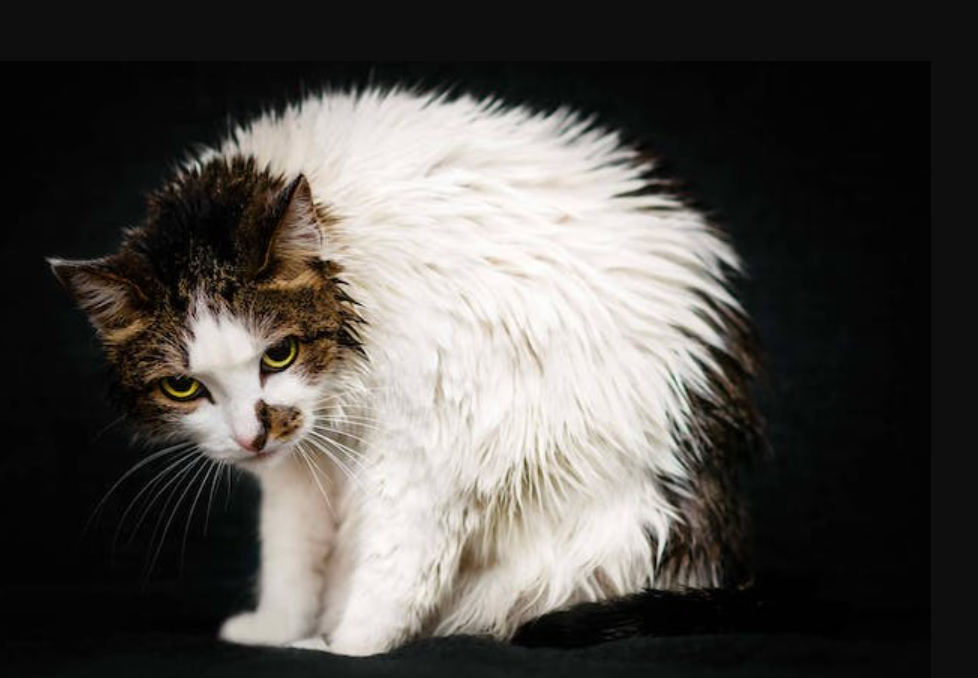
Follow this routine for 15-30 minutes after toweling off to help your cat re-stabilize:
Keep Wrapped Snugly in the Towel
Maintain the warm towel enclosure for 10-15 minutes after bathing. Gently pat and rub them through the towel to accelerate drying and restore healthy body temperature.
Blow Dry on Low Heat
Further speed drying with a pet-safe blow dryer on low, warm temperature setting. But continuously move it around to prevent overheating any single area.
Avoid human hair dryers even on cool settings – the air velocity can distress cats.
Provide an Enclosed Warm Resting Spot
Give your cat a comfy, confined cat bed or crate lined with soft blankets away from the tub zone. This separates them from the stress location while they finish air drying.
Continuously Distract with Toys or Treats
Engage their attention with interactive toys or tasty treats while drying. This shifts their focus away from being cold and wet.
Monitor for Persistent Shivering
Shivering normally subsides within 30-60 minutes as cats re-stabilize. If tremors continue longer, contact your vet for assessment, as it may indicate an underlying issue.
Lightly Apply a Feline Appeasing Pheromone
Misting a small amount of Feliway or a similar feline pheromone provides comforting, familiar scents that can supplement your cuddles.
Brush Out Once Mostly Dry
Use a soft slicker brush to fluff up and retexture your cat’s coat once it’s near dry. This helps remove the last lingering dampness.
With this soothing aftercare, the majority of your cat’s shivering should gradually diminish. But if it remains excessive or other signs of distress emerge, a prompt veterinary visit is recommended.
Signs of Severe Distress in Cats After Bathing Needing Veterinary Assessment
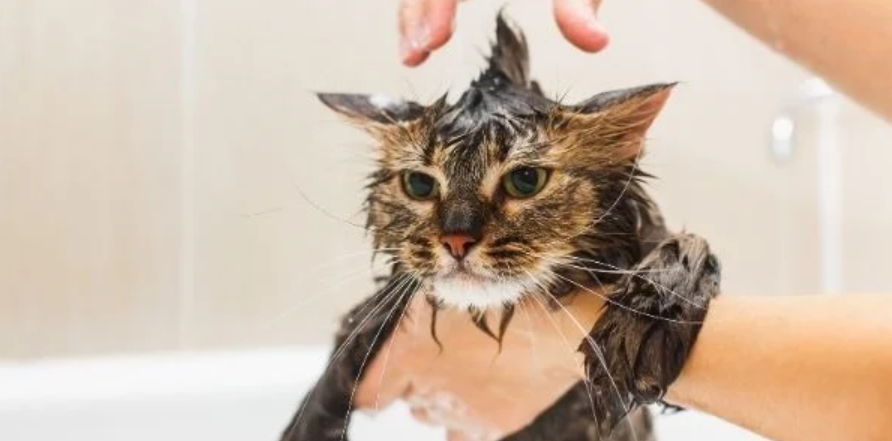
While annoying, post-bath shivering alone is not dangerous. But if any of these more concerning symptoms accompany the tremors, seek immediate veterinary care:
- Prolonged, uncontrolled trembling lasting over 1-2 hours
- Difficulty walking or standing – lack of balance and coordination
- Hiding and unwillingness to move – withdrawn, abnormally inactive
- Erratic meowing, crying or whining – signs of intense stress, pain or panic
- Aggressive behaviors like biting, scratching, swatting, or hissing
- Respiratory distress – audible wheezing, coughing, excess panting
- Vomiting, diarrhea, loss of appetite, lethargy – indicators of illness
- Collapse or loss of consciousness – rare emergencies
Complications like hypothermia, allergic reactions, or toxic exposure can cause these troubling symptoms. Better safe than sorry – if you notice any of these reaction clusters along with shivering, rush your cat to the emergency vet immediately.
Otherwise, the shivering alone is likely just standard post-bath discomfort, not a dire health threat. With ample TLC, your cat should bounce back to normal within an hour or two.
Professional Cat Grooming As an Alternative for Difficult Kitties
If your cat remains intensely stressed and shaken up after bathing at home despite your best efforts at calming and reducing discomfort, consider outsourcing it to professional cat groomers.
Benefits of professional cat grooming include:
- Lower stress methods – Trained extensively in feline handling and behavior management
- Specialized grooming tables and tools – Allows safer restraint and positioning options
- Faster process – Latest techniques and high-velocity dryers get cat clean and dry quicker
- Soothing handling – Less painful restraint than an owner wrestling with a wet, freaked out cat
- Specialty shampoos – For skin, flea, coat and other specific needs
- Nail trim and coat brush out – Full service grooming
- No messy clean-up or struggle – You don’t have to deal with containing a livid soaked kitty
Ask your veterinarian to recommend skilled local cat groomers. While pricier than DIY, it often causes less enduring trauma for notoriously bath-averse kitties.
How Frequently Should You Bathe a Cat?
Most cats only need occasional bathing every 2-4 months, if at all. Over-bathing can dry out the skin and coat.
Consider professional help for specialty shampooing needs like medicated washes. Or if your home baths stress your cat excessively despite your best efforts.
FAQs About Cat Shaking and Shivering After Bathing
Here are answers to common questions on post-bath tremors in cats:
Is it normal for cats to shake after a bath?
Yes, it’s totally normal for cats to shake or shiver after baths. This is an instinctive reaction to stress, wet fur, and temperature change.
How long does the shivering last after a bath?
Shivering normally lasts around 30 minutes to 1 hour after bathing. It subsides once the cat’s coat dries completely and body temperature stabilizes.
When should I be concerned about bath-related shivering?
Contact your vet if excessive shivering continues past 1-2 hours after a bath. Also seek medical advice if other symptoms emerge like vomiting, lack of appetite, crying, hiding, trouble walking, etc.
Is it okay to blow dry my cat after a bath?
Yes, using a pet-safe blow dryer on low heat can help accelerate drying. But constantly move it around to avoid overheating any single area. Never use a human blow dryer even on cool settings.
Should I bathe my cat after applying flea treatment?
Avoid bathing right before or after applying flea prevention, as this can reduce effectiveness. Follow your specific product’s guidelines, but waiting at least 2 weeks between bathing and flea treatments is best.
The Takeaway: Post-Bath Shivering Is Normal but Annoying Feline Behavior
Seeing your cat shake after bathing can be worrying. But in most cases, it’s simply an instinctive reaction to stress and the discomfort of wet fur.
With proper handling techniques, temperature regulation, and drying/recovery care you can significantly reduce the shivering reaction.
Differentiate normal shivering from more serious medical red flags like sustained trembling, respiratory issues, or lack of appetite/lethargy. But typically, violent post-bath quivers are not dangerous – just a nuisance.
Offer your damp, shaken kitty some empathy and TLC. With time to thoroughly dry and regain equilibrium, your cat will relax and return to their normal routine – at least until their next dreaded bath!

